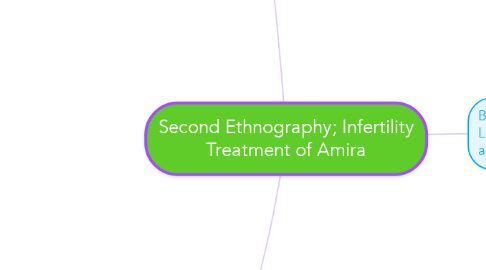
1. Prologue
1.1. Egyptian culture to have babies, heirlooms to family fortune.
1.1.1. Strong culturally embedded desire for at least two children
1.1.2. Childhood hopes and dreams of obtaining a, "big big family" with "so many children."
1.1.2.1. History of big families.
1.1.2.2. The effect of being an only child, provides more will to have a family.
1.1.2.3. Idea of there being no purpose behind marriage if there is no children
1.1.3. The disapprovals;
1.1.3.1. Frowning on adoption (mostly middle/upper class).
1.1.3.2. Not having kids period.
1.1.3.3. Talking about infertility, especially on the male part.
1.2. Difficulties on fertilization
1.2.1. Age; the more time it takes, the less of a chance.
1.2.2. The lack of infertility clinics that register IVF.
1.2.2.1. Lack of doctors
1.2.2.2. Lack of technological advances that work
1.2.3. Denial on both male and female parts.
1.2.3.1. Male not believing in infertility; de-masculinizes.
1.2.3.2. Females; not believing. Continuing treatments with no success.
1.2.4. Side-effects become massive.
1.2.4.1. physical sickness
1.2.4.2. emotional health
1.2.4.3. mental breakdowns
1.2.5. Cost
1.2.5.1. Treatments
1.2.5.2. Medications
2. Chapter 1: Introduction
2.1. Globalization
2.1.1. Constrains
2.1.1.1. Irony of resource-poor overpopulated M.E Nation
2.1.1.2. Moral that bear on questions of scientific progress.
2.1.2. IVF
2.1.2.1. local support groups for IVF patients
2.1.2.2. patients' disclosure
2.1.3. Technologies
2.1.3.1. new reproductive technology development
2.1.3.2. Private maternity hospitals
2.1.3.3. internet
2.1.3.4. reproductive physicians
2.1.3.5. highly educated patients
2.2. Transnationalism
2.2.1. "medical migrants"
2.2.2. global movements
2.2.2.1. reshape local culture
2.2.2.1.1. indigenous theories of procreation that subject the notion of women producing eggs for vitro fertilization.
2.2.2.1.2. prohibitions on the use of third party donation
2.2.2.1.3. shortages of hormonal medications leading "suitcase trading."
2.2.2.1.4. Stigma of IVF
2.2.3. infertility treatment-seeking technological process
2.2.3.1. Availibity=hope
